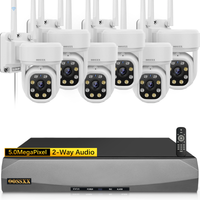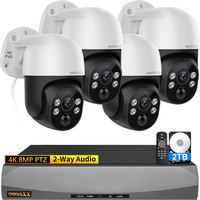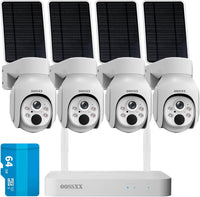In order to establish an effective connection for your surveillance camera system host to the internet, there are specific steps and equipment required. This guide will take you through the process using the example of an ADSL network and a TP-LINK router.
**Step 1: Preparatory Work**
Before you begin, ensure you have the necessary equipment:
- Active ADSL broadband with functioning internet access. Remember the ADSL username and password.
- Install the TP-LINK router (for users with four or more computers, the R810 or other routers supporting DDNS can be considered). Connect the computer, surveillance camera, and the router as per the instruction manual. Set the router's internet connection to "Automatic." Verify that the computer can access the internet normally.
**Step 2: IE Remote Monitoring Configuration for the DVR**
Firstly, check the network setup:
- Verify that the DVR's network connection is operational and that it is functioning properly.
- Connect the network cable to the DVR, power it on, and access the DVR settings interface. Navigate to "Network Settings":
- Select "Type" → "Static IP"
- Modify the static IP to "192.168.1.110" and confirm
- Modify the gateway to "192.168.1.1" and confirm
- Modify the subnet mask to "255.255.255.0" and confirm
Secondly, check if the DVR is accessible within the local network and if browsing is normal:
- Open the IE browser interface.
- Go to "Tools" → "Internet Options..."
- In the "Security" tab, select "Custom level..."
- Under "ActiveX controls and plug-ins," enable all seven options
- Enter "192.168.1.110" in the address bar and press Enter
- Download and install prompted plugins
- After installation, you'll be prompted to log in. Use the default username and password.
**Step 3: Router Remote Monitoring Configuration**
With the DVR now accessible within the local network, proceed to set up remote monitoring through the router:
- Open IE and enter "192.168.1.1" to access the router's settings.
- Navigate to "Port Forwarding," input the required information, and save.
- Navigate to "DMZ Host," set the IP address to "192.168.1.110," enable the option, and save.
- Navigate to "Dynamic DNS," input the dynamic domain name, username, and password. Enable DDNS and save.
With these steps completed, you can now use the dynamic domain name for remote monitoring.
The process for connecting a surveillance camera system host to the internet involves setting up the necessary hardware, configuring the DVR's network settings, and ensuring proper router configurations. For the best results, following the manufacturer's instructions and using compatible equipment is recommended. With the support of OOSSXX's wireless security system products, including indoor home cameras and outdoor surveillance camera systems, users can achieve seamless and reliable remote monitoring capabilities.









